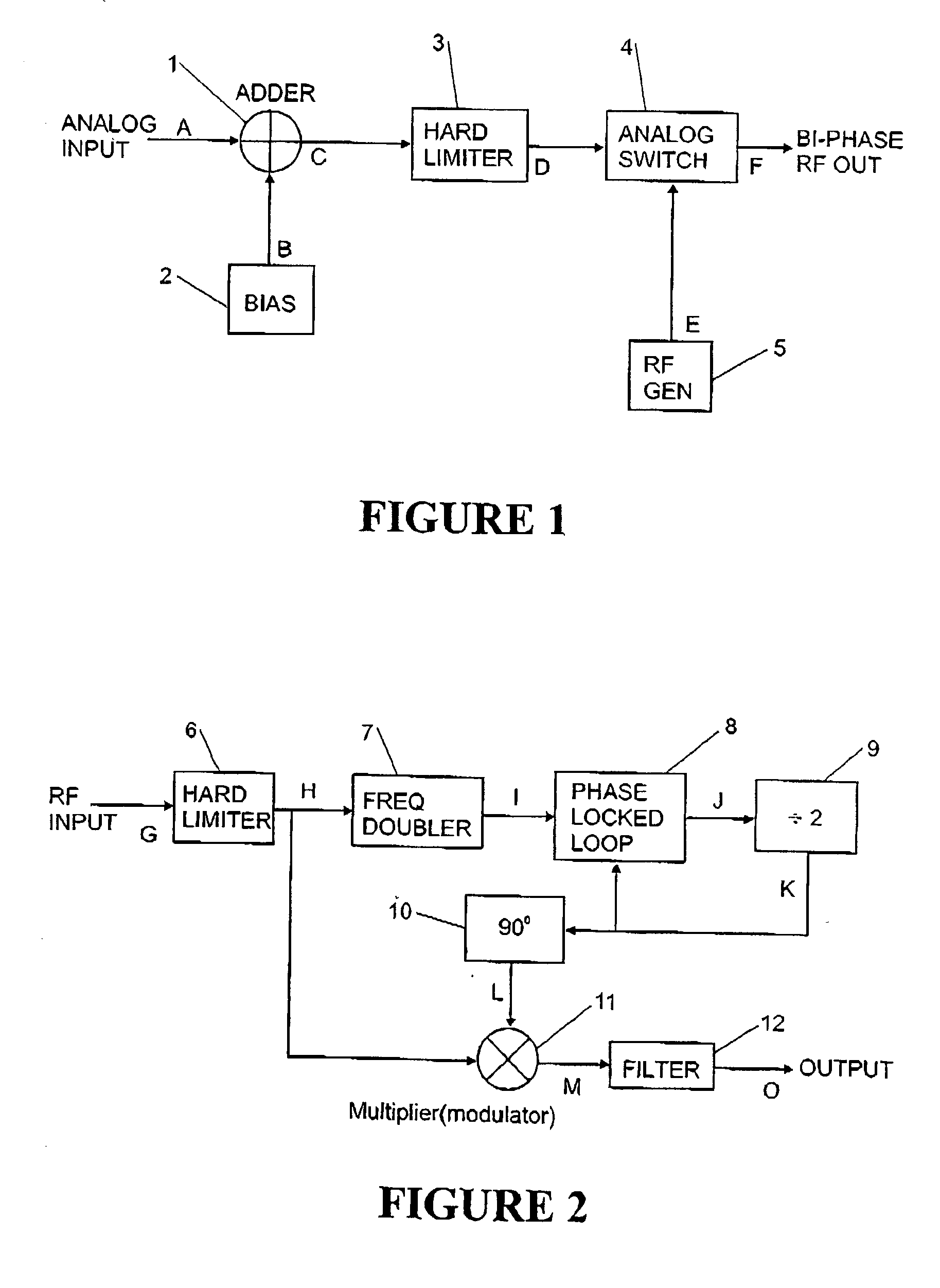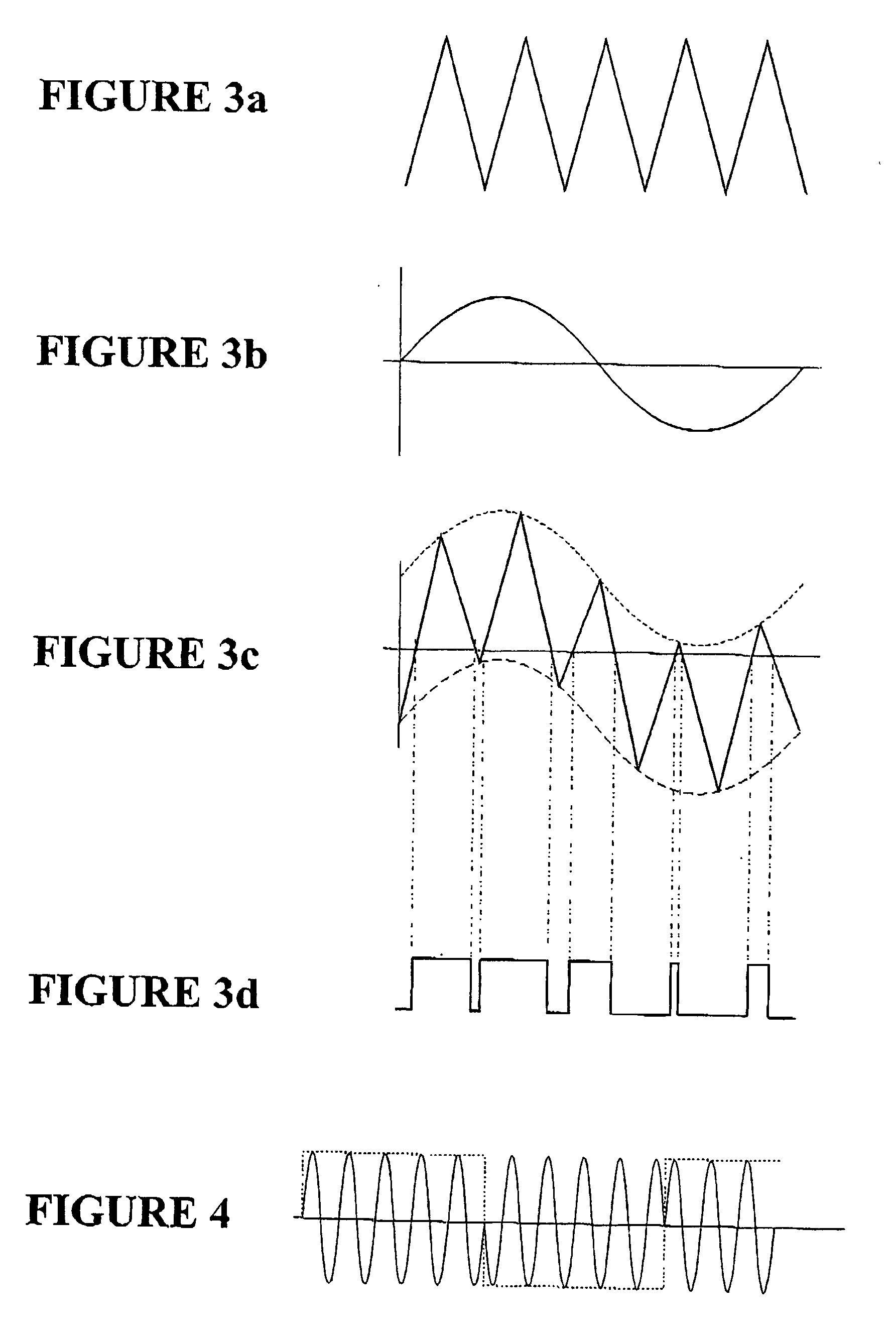Analog bi-phase modulation
a bi-phase modulation and analog technology, applied in phase-modulated carrier systems, synchronous/start-stop systems, digital transmission, etc., can solve the problems of not being able to transmit analog (multi-level) signals such as voice, voice transmitted by this method producing very deleterious effects, and voice distorted grossly, etc., to limit the bandwidth needed to transmit
- Summary
- Abstract
- Description
- Claims
- Application Information
AI Technical Summary
Benefits of technology
Problems solved by technology
Method used
Image
Examples
Embodiment Construction
[0041] FIG. 1 shows a block diagram of an ABPM transmitter,
[0042] FIG. 2 shows a block diagram of a receiver for demodulating ABPM,
[0043] FIG. 3(a) shows a triangular bias signal,
[0044] FIG. 3(b) shows a sinusoidal input or message signal,
[0045] FIG. 3(c) shows the sum of the bias and input signals,
[0046] FIG. 3(d) shows the output of hard limiting the waveform of FIG. 3(c), and
[0047] FIG. 4 shows a carrier signal modulated by the waveform of FIG. 3(d).
[0048] FIG. 1 is a simplified block diagram of a transmitter according to the preferred form of the invention and will be explained with reference to the waveform diagrams of FIGS. 3 and 4. Analog information signal A (see FIG. 3(b) is added to a triangular or sinusoidal bias signal B (see FIG. 3(a) produced by bias generator 2, in adder 1. The combined signal C (see FIG. 3(c) is then converted to a square wave D (see FIG. 3(d) by hard limiter 3. The amplitude of the bias is set to be always larger than the information signal. This en...
PUM
 Login to View More
Login to View More Abstract
Description
Claims
Application Information
 Login to View More
Login to View More - R&D
- Intellectual Property
- Life Sciences
- Materials
- Tech Scout
- Unparalleled Data Quality
- Higher Quality Content
- 60% Fewer Hallucinations
Browse by: Latest US Patents, China's latest patents, Technical Efficacy Thesaurus, Application Domain, Technology Topic, Popular Technical Reports.
© 2025 PatSnap. All rights reserved.Legal|Privacy policy|Modern Slavery Act Transparency Statement|Sitemap|About US| Contact US: help@patsnap.com



